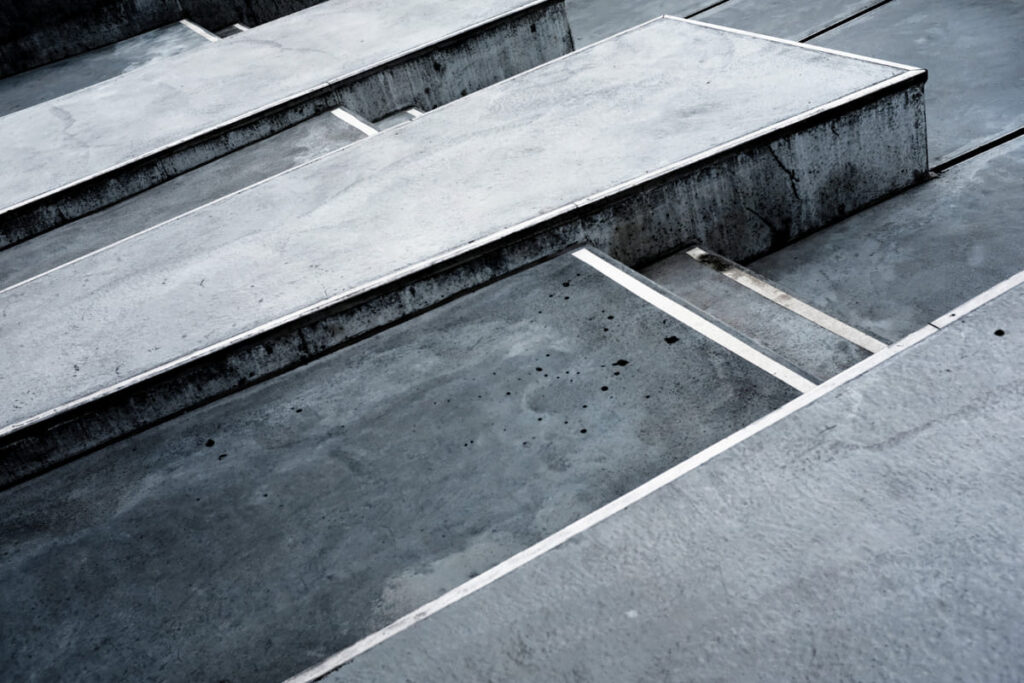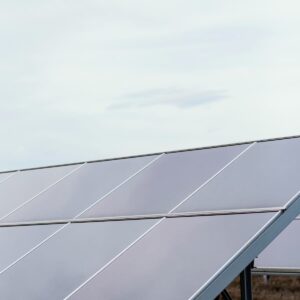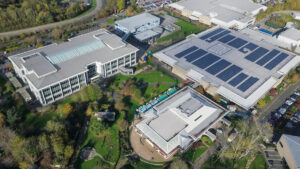Concrete Sensors have emerged as vital tools on today’s construction sites. By embedding small devices in concrete pours or attaching wireless nodes, project teams can monitor the material’s curing and strength development in real time. These sensors, which include embedded units cast directly into the concrete and wireless devices transmitting data remotely, offer unprecedented visibility into a once opaque process. The following document is organized into two main sections: first, the common problems and consequences in large concrete works, and second, the solutions – highlighting eight key reasons to adopt concrete sensor technology (with global case studies illustrating each point). The tone is objective and technical, intended for internal training or documentation.
Table of Contents
Problems and Consequences
Large construction projects face several recurring issues when dealing with concrete structures. Without modern sensors, crews must often rely on fixed timelines or guesswork for curing, which can lead to costly mistakes or conservative delays. This section outlines key problems – such as premature formwork removal, uneven curing, scheduling delays, structural risks, and limited real-time insight – and how they impact timelines, quality, safety, and costs.
1. Premature Formwork Removal
Removing formwork (molds and supports) too early is a dangerous yet common issue under schedule pressure. Contractors may be tempted to strip forms to reuse them quickly, but if the concrete hasn’t gained enough strength, the structure can fail. In fact, premature removal of formwork prior to proper curing is frequently identified as a cause of formwork collapse when crews rush due to tight schedules or budget pressures. Such failures risk worker safety and can destroy partially built structures.
Even if collapse is avoided, early removal may lead to deflections or cracks in young concrete, compromising long-term structural integrity. Ensuring the concrete has adequately cured (often specified as a minimum time or strength) before stripping forms is critical – yet without direct measurements, crews might either remove too soon (risking collapse) or wait longer than necessary (delaying the project).
2. Uneven Curing and Temperature Variations
Concrete does not always cure uniformly across a large element. Thick pours (e.g. mat foundations or bridge piers) can develop hot spots in the core and cooler zones at the surface. If not managed, these temperature differentials cause uneven curing rates and internal stresses. For example, industry guidelines like ACI 318 limit the maximum core temperature (often around 158–160 °F) and the temperature differential (around 35 °F or 20 °C) to prevent thermal cracking. In practice, however, without monitoring, a mass concrete pour could exceed these limits unknowingly. Uneven curing can result in parts of a structure that are weaker or cracked while other parts are sound.
Such hidden flaws affect durability and safety – a bridge pier with internal thermal cracks, for instance, may require costly repairs or have a reduced lifespan. Moreover, variations in curing (due to weather, improper insulation, or inconsistent moisture) mean that some sections of a slab or wall attain strength later than others, potentially creating weak links in the structure. The consequence is a loss of uniform quality and an increase in structural risk if undetected.
3. Scheduling Delays
Traditional concrete curing and testing processes can significantly slow down construction schedules. After a pour, crews often must wait days or weeks to achieve the required strength before proceeding with the next steps (such as removing formwork, post-tensioning, or loading the structure). The standard practice of casting sample cylinders or cubes and sending them to a lab for break tests at set intervals (e.g. 7 and 28 days) means decisions are made on fixed timelines rather than actual in-situ concrete performance.
This leads to built-in wait times and sometimes unnecessary delays. Inaccurate or conservative testing methods often prolong schedules – lab-cured samples may not accurately represent the in-place concrete, often showing lower strength than the structure actually has, which in turn forces project managers to wait longer than needed. In one conventional approach, a typical pour might require about six concrete test cubes to be made and tested off-site.
Not only is this labor-intensive, but waiting for results (especially if the lab is far or backlogged) can idle the site. If the test results are lower than expected (perhaps due to differences in curing conditions for the samples), crews must delay stripping forms or opening the structure, even if the in-situ concrete might already be strong enough. These schedule delays cascade through project timelines, pushing back subsequent trades, increasing costs for equipment rental and labor stand-by, and potentially leading to contractual penalties.
4. Structural Risk and Quality Uncertainty
Uncertainty about concrete strength development poses a structural risk. If a slab or column has not reached its design strength but is nonetheless loaded (due to formwork removal or construction loads), there is a danger of structural failure. High-profile construction accidents have underscored the importance of proper concrete strength and curing – for example, investigations into some structural collapses during construction (such as the 2019 formwork collapse in a New Orleans hotel and the 2018 pedestrian bridge failure in Florida) have pointed to inadequate strength or construction flaws as contributing factors. Even in less extreme cases, insufficient curing or curing at improper temperatures can mean the concrete never achieves its intended strength or durability.
Essentially, without real data, engineers must assume worst-case curing conditions (to maintain safety margins), which can lead to over-engineered timelines or, conversely, if overlooked, can jeopardize the structure. The lack of certainty about what is happening inside critical concrete elements is a liability – both for structural safety and for quality assurance. Teams may end up being overly cautious with loads and schedule (impacting cost and time) or unknowingly take on risk if they proceed without confirmation of strength.
5. Limited Real-Time Insight into Concrete Behavior
Once concrete is placed, it undergoes chemical hydration and strength gain that are invisible from the outside. Traditionally, project teams have limited real-time insight into this process – they might only get intermittent data points (like a cylinder break result after a few days) or rely on rule-of-thumb curing durations.
This lack of continuous visibility means that decisions on a construction site are often reactive. For instance, if an unexpected cold front slows down curing, the team might not realize the concrete is gaining strength more slowly until a scheduled test shows low results days later, forcing a sudden delay. Conversely, if concrete gains strength faster than anticipated (perhaps due to favorable weather or mix additives), the team wouldn’t know and might waste valuable time waiting. In essence, without embedded monitoring, concrete curing is a “black box” process.
The consequence is that project managers either build in large safety buffers (delaying progress to be sure strength is achieved) or risk moving ahead blindly. In both cases, there is inefficiency. Limited insight also hampers quality control – potential issues like overheating, freezing, or moisture loss inside the concrete can go unnoticed until they cause visible problems (like cracking or surface defects). On large sites, this lack of real-time data across numerous pours makes it difficult to coordinate and optimize the schedule, as concrete-related tasks remain uncertain on the critical path.
Suggested article to read: Environmental Sensors; Comprehensive Guide 2024
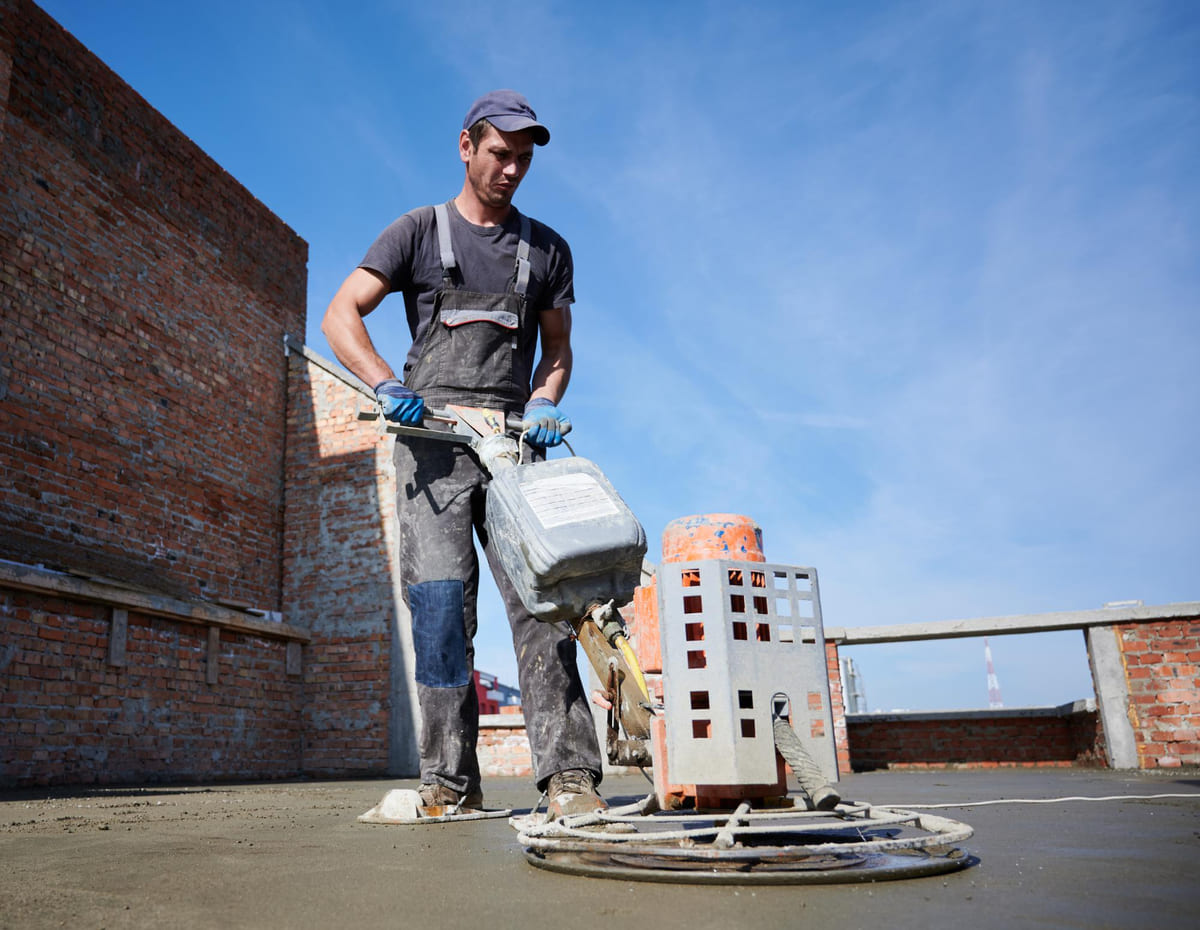
Solutions with Sensors
Concrete sensors directly address the above problems by providing timely, accurate data on what’s happening inside a curing concrete element. Modern embedded sensors (placed in the concrete, often tied to rebar before the pour) and wireless systems (which transmit data to handheld devices or cloud platforms) allow construction teams to make informed decisions rather than relying on guesswork or fixed timelines.
In this section, we present eight reasons why concrete sensors are essential in modern construction, each highlighting a specific benefit and illustrated with real-world examples from projects around the globe. These reasons range from real-time strength monitoring and improved safety, to optimized curing practices and accelerated project schedules. Together, they show how sensor technology transforms concrete from a black box into a transparent, manageable part of the construction process.
1. Real-Time Strength Monitoring
One of the most significant advantages of concrete sensors is the ability to monitor strength development in real time. Instead of waiting for scheduled lab tests, engineers can see the in-situ strength of concrete as it cures. Most wireless concrete sensors utilize the maturity method (ASTM C1074), which correlates temperature history to strength gain, to provide ongoing estimates of concrete strength. This means the site team knows exactly when a structural element reaches the required strength for next steps (like removing supports or applying loads).
For example, Costain (a major UK contractor) deployed wireless maturity sensors on multiple projects and could instantly track concrete strength via a cloud dashboard. Engineers reported that having immediate access to strength data allowed them to make faster decisions on formwork removal without sacrificing safety.
In one case, a London construction team confidently struck formwork 14 days earlier than originally scheduled because sensors showed the concrete had achieved its target strength. Real-time strength monitoring eliminates the uncertainty buffer – crews neither jump ahead too early nor wait longer than necessary. This leads to optimized construction sequences. It also improves quality control: any anomalies in strength gain (due to mix issues or external conditions) are caught as they happen, allowing for prompt investigation or remedial action. In summary, continuous strength insight ensures each element meets structural requirements exactly when expected, streamlining the workflow.
2. Improved Safety Margins
By delivering reliable, real-time data, concrete sensors help maintain and even improve safety margins on construction sites. “Safety margin” here refers to the confidence that structural elements have attained the necessary strength before being loaded or progressed to the next stage. With traditional methods, crews often operate either too cautiously or too riskily – but sensors provide concrete evidence (pun intended) of strength, enabling accurate and safe decision-making.
For instance, Costain’s materials engineers noted that with instant data at hand, they could determine precisely when it is safest to remove temporary falsework and formwork after a pour. Instead of relying on a generic curing period, they removed supports at the first safe opportunity, maintaining structural safety while saving time. The data-driven approach ensures that there is no guesswork in critical operations: every removal or load application is backed by measurements. This reduces the risk of human error leading to premature loading (which could cause collapse).
It also means engineers don’t have to lean on overly conservative wait times “just in case,” because safety is verified in real time. In practice, improved safety margins manifest as fewer accidents, no incidents of collapse due to under-strength concrete, and greater assurance for the design professionals who must sign off on each step. A side benefit is worker safety during testing operations – since sensors are read remotely, technicians no longer need to climb on forms or stand under freshly poured slabs to collect samples or readings, reducing exposure to potential hazards. Overall, concrete sensors allow projects to meet or exceed safety standards without incurring the delays traditionally associated with “playing it safe.”
3. Optimized Curing and Quality Control
Concrete sensors enable project teams to actively optimize the curing process for each pour, rather than taking a passive one-size-fits-all approach. By monitoring internal temperature and humidity (and thus indirectly the hydration activity), sensors provide feedback that can be used to adjust curing measures (insulation, heating, cooling, or moisture retention) in real time. This leads to more uniform and complete curing, which improves the quality and durability of the concrete. A case in point is a bridge expansion project in Edmonton, Canada, which involved massive pours.
The team’s goal was to prevent the concrete core from exceeding 70 °C and to keep the core-to-surface temperature differential under 20 °C – critical thresholds to avoid thermal cracking. By using embedded temperature sensors throughout the concrete, they continuously tracked the curing temperatures. The data allowed them to fine-tune their use of heaters and cooling methods; in fact, the real-time readings optimized the heating plan and confirmed that expensive cooling pipes were not needed, saving effort and cost. Instead of blindly running heaters or assuming the worst-case scenario, they applied just enough temperature control to keep curing on target.
This not only prevented any thermal cracking (ensuring the structure’s long-term durability) but also yielded significant cost savings (the project reported about $42,000 saved by eliminating unnecessary cooling infrastructure). More broadly, optimized curing means each element gets the right treatment: if one area is cooling too fast, sensors might trigger additional curing blankets or heat; if another is overheating, crews can peel back insulation or add cooling sooner. The result is uniform strength development across the structure and higher-quality concrete. Such active curing management would be impossible without sensor feedback. In the long run, better cured concrete has fewer defects (like surface spalling or internal voids) and better performance, reducing maintenance needs.
4. Reduced Testing Cycles and Waste
Concrete sensor technology can drastically reduce the number of traditional test specimens and cycles needed, along with the waste and labor associated with them. In conventional practice, every significant pour entails casting multiple cylinders or cubes that are cured under often ideal conditions and then broken in a lab to infer the in-situ strength. This process is not only time-consuming but also wasteful – the concrete in those samples and the effort to make, store, transport, and break them does not contribute to the structure.
By contrast, sensors embedded in the actual structure act as always-on test specimens, rendering many lab tests redundant. A large contractor reported that after adopting wireless sensors, they eliminated the need for a third-party lab to do nearly all field-cured cylinder breaks. In the UK, one Costain project used sensors for over 80 different pours, which eliminated the need to cast and crush approximately 500 concrete cubes for strength tests. This is a remarkable reduction in waste concrete and labor. Fewer specimens mean technicians spend less time handling samples and more time on productive tasks. Additionally, avoiding frequent lab tests cuts down on testing costs and often speeds up the project (as discussed earlier under scheduling).
Another facet of reduced testing is minimizing destructive testing on the structure itself. Sometimes cores must be drilled from hardened concrete to verify strength or investigate issues – with continuous data from sensors, such drastic measures are rarely needed. The quality information is already available without damaging the structure. Reducing testing cycles also improves documentation efficiency: digital sensor data can be automatically collected and reported, replacing stacks of lab reports and paperwork. In summary, concrete sensors streamline the quality control process, maintaining assurance of strength with far fewer physical tests. This not only saves time and money but also means less disruption and material waste on the jobsite.
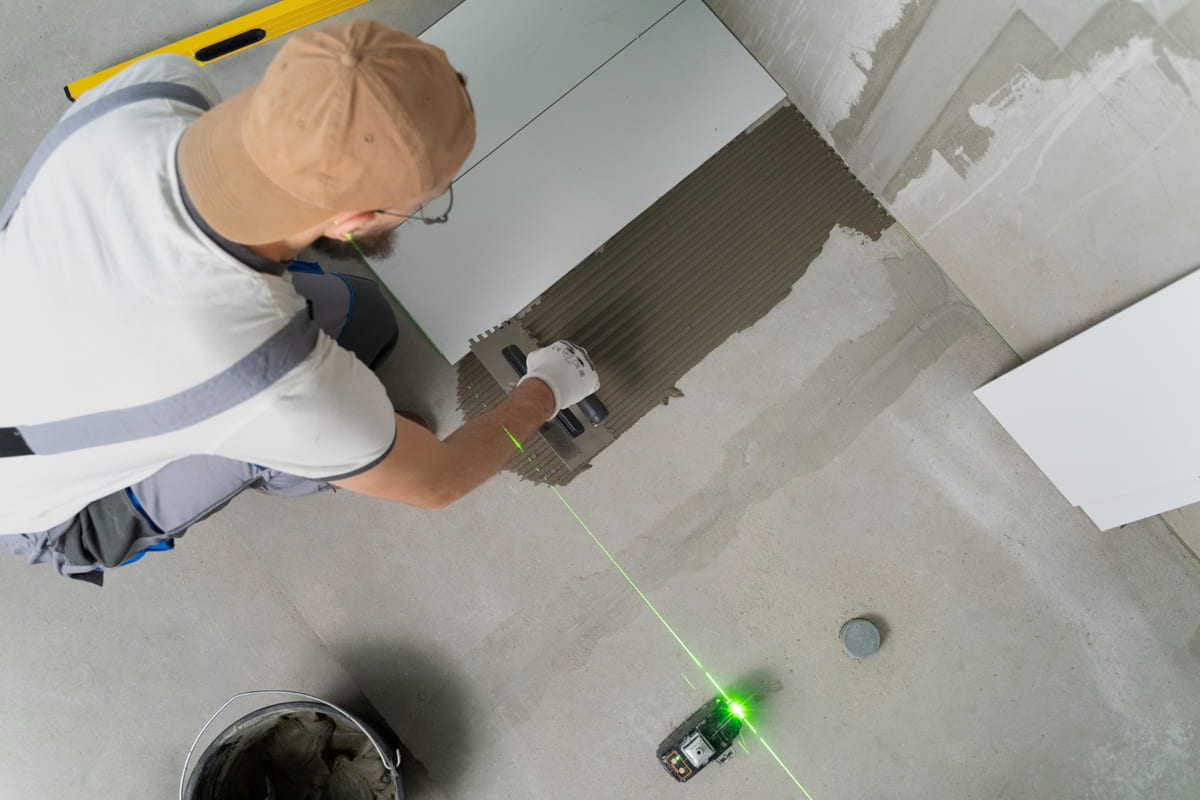
5. Accelerated Construction Schedules
Perhaps the most immediately tangible benefit of using concrete sensors is the acceleration of construction schedules. Time is money in construction, and any technology that safely shaves days or weeks off the timeline of critical path activities can provide huge value. By knowing the moment concrete reaches required strength (rather than assuming it will by a certain day), project managers can pull in succeeding tasks earlier.
Multiple real-world projects have demonstrated significant schedule gains thanks to maturity monitoring. For example, at Heathrow Airport in the UK, contractors installed concrete sensors during the refurbishment of taxiways. The sensors indicated that the concrete achieved its design strength 14 days ahead of the original schedule, allowing the team to reopen the pavement to aircraft traffic two weeks early. This kind of improvement is game-changing for infrastructure projects where downtime directly impacts operations.
Similarly, Costain’s use of sensors on infrastructure jobs led to striking times (formwork removal times) being reduced by about 33% on average. Faster formwork turnaround means each set of forms can be reused sooner on subsequent sections, effectively speeding up the cycle of floor construction in a high-rise or the segmental progression of a bridge. Another example comes from a high-rise building project in Canada: facing an aggressive 55-story schedule, the contractor PCL tested wireless maturity sensors and saw “substantial time savings” in their concrete operations, enabling them to stay on track.
Accelerating schedules does not mean rushing irresponsibly; rather, sensors remove unnecessary padding. They allow the project to progress at the pace the concrete actually gains strength, which in many cases is faster than the old standard assumptions. This benefit compounds over multiple pours – saving a day or two on each floor of a multi-story structure can add up to finishing weeks earlier. The net result is earlier project completion or turnover, reduced overhead costs, and potentially earlier revenue generation for the building owner, all achieved without compromising safety or quality.
6. Wireless Data Collection and Remote Monitoring
Modern concrete sensors are typically equipped with wireless connectivity, enabling convenient data collection and remote monitoring. Unlike traditional wired thermocouples that require manual readings (often by plugging in a device to each sensor), wireless sensors transmit data via Bluetooth, cellular, or mesh networks to central devices or cloud platforms. This has several advantages: it saves labor, improves safety, and provides more frequent data.
Wireless data collection means that an engineer can pull up concrete temperature and strength readings on a smartphone or laptop from anywhere, even off-site, as long as the sensor network is active. In practice, this can eliminate a lot of tedious work. Consider a scenario from an Edmonton transit facility project: originally, technicians had to visit each concrete element every few hours to read thermocouple temperatures, record them, and later input them into reports. By switching to wireless maturity sensors, the team cut out these trips – one engineer noted he only needed to visit the site once a week and could retrieve all historical data instantly on his phone.
With wireless technology, real-time alerts can also be set up – for example, if the concrete temperature goes out of range, the system can notify the team immediately via email or text, something impossible with manual checks. This continuous monitoring not only saves about 85% of the labor hours related to testing (as the Edmonton case showed), but also reduces the need for personnel to be in potentially hazardous locations (such as climbing formwork to reach embedded gauges).
Data accuracy and frequency are improved too: instead of one reading every few hours, sensors might log data every few minutes, creating a rich dataset for analysis. The wireless aspect also facilitates centralizing the information. Project managers and quality engineers can all see the latest readings in one dashboard, improving collaboration and transparency on the job. In sum, wireless concrete sensors modernize the workflow – bringing concrete testing into the digital age with Internet-of-Things (IoT) connectivity and remote accessibility.
7. Temperature Monitoring and Control (Cold and Hot Weather Concreting)
Concrete sensors excel at temperature monitoring, which is crucial for both cold-weather and hot-weather concreting, as well as mass concrete pours. Keeping concrete within the correct temperature range ensures the chemical hydration progresses properly. If concrete gets too cold (below around 5 °C/40 °F in early age), curing virtually stops and the water can even freeze, causing damage. If it gets too hot (as discussed under uneven curing), it can crack or cure too quickly, leading to brittleness. Embedded temperature sensors give contractors real-time visibility into the thermal profile of a pour.
This is especially important in scenarios like a winter pour or a large volume pour. For example, in the construction of a 27-floor building in San Francisco, sensors were placed in a 6-foot thick tower crane pad footing to ensure the core temperature stayed below the specified 160 °F limit and that the gradient did not exceed 35 °F. The team monitored the data via mobile app and confirmed that the concrete stayed within range, avoiding any thermal cracking issues.
In cold weather situations, sensors can indicate when the concrete is cooling too rapidly so that contractors can immediately apply insulating blankets or adjust external heat. Conversely, they might show that the concrete’s exothermic reaction is sufficient to keep it warm, allowing heaters to be turned down to save fuel. Continuous temperature monitoring thus helps in maintaining optimal curing conditions. This leads to more reliable strength development (preventing the scenario where concrete gains strength slowly due to cold, surprising the team with low break results). It also protects against quality issues: for instance, avoiding early-age freezing means the concrete won’t suffer internal micro-cracks or permanent strength loss.
Many projects now incorporate temperature criteria in their curing specifications (for mass pours or cold weather pours), and sensors are the practical way to meet and document those criteria. In summary, by using concrete sensors to monitor temperature, construction teams can actively control the curing environment – heating, cooling, or insulating as needed – ensuring that each pour cures under the best possible conditions regardless of external weather. This results in safer, stronger concrete and fewer delays due to temperature-related problems.
8. Concrete Maturity Modeling and Predictive Analysis
Concrete sensors leverage the concept of maturity modeling, which is a scientifically backed method to predict concrete strength based on its temperature-time history. As mentioned earlier, this method is codified in standards like ASTM C1074 and is recognized in many building codes. By embedding sensors that log temperature and using calibration data for the specific concrete mix, project teams can get a predictive analysis of strength gain at any given time. This goes beyond just instantaneous monitoring – it allows for forecasting.
This predictive power helps in planning the project schedule proactively. If the model indicates a key strength milestone will occur at 36 hours, the team can plan an inspection or formwork crew for that time (rather than waiting a default 3 days). Maturity modeling has been validated on projects worldwide as a reliable indicator of in-situ strength. In fact, it’s built on decades of research: the core idea is that concrete strength is a function of the curing temperature over time – warmer concrete cures faster (up to a point), so tracking the temperature integrates the effect of time and temperature into a single “maturity index” value. Sensors make collecting this data easy and automatic.
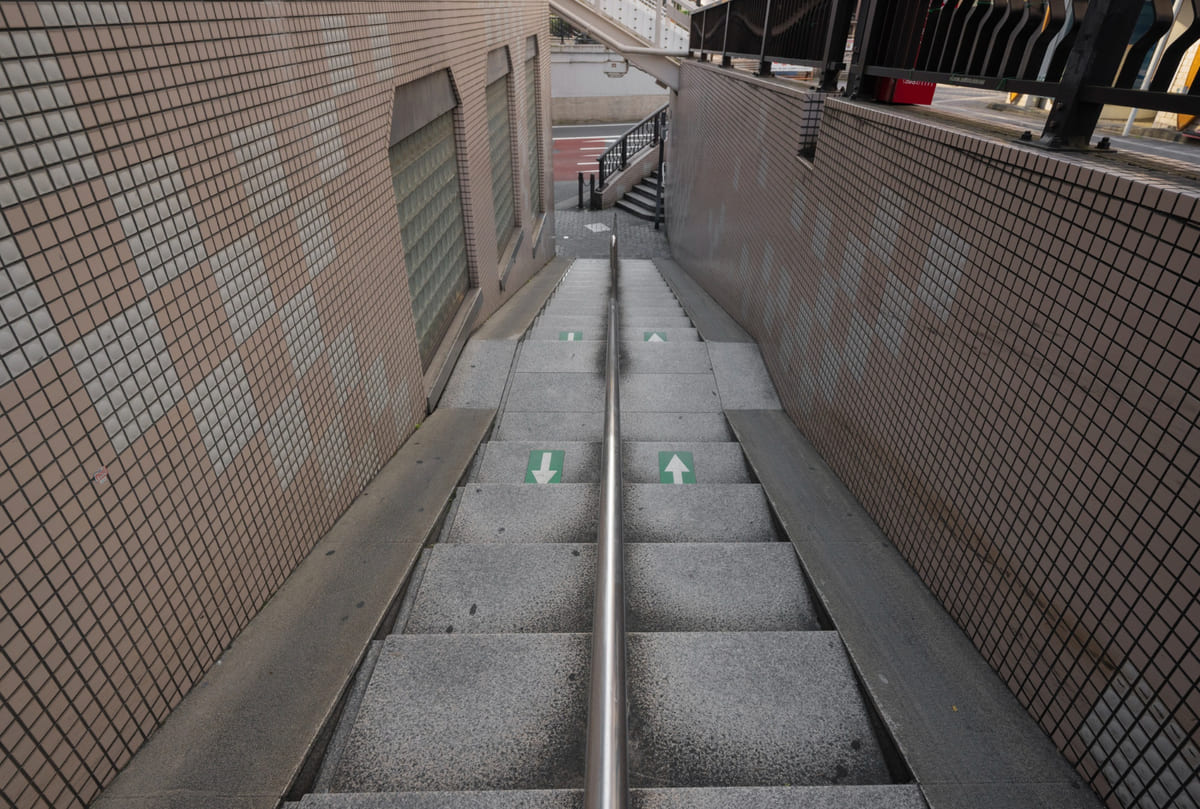
A practical example: on the San Francisco high-rise project, the maturity sensor data was used to time the removal of supports for a tower crane foundation. The sensors showed the in-place concrete strength progression, which matched or exceeded lab predictions, allowing the crane to be erected on schedule without extra waiting. By using maturity models, crews gain insight into the future – they can answer “if we pour today, when can we expect to hit strength X?” with confidence. This also helps in decision-making if mixes are changed or if there are cold spells; the model will adjust based on actual data rather than leaving it to educated guesses.
Moreover, maturity data provides a record for owners and engineers, demonstrating that the concrete attained the required strength (useful for compliance and sign-offs). In summary, concrete sensors coupled with maturity modeling transform strength testing from a retrospective activity (breaking cylinders after the fact) into a predictive, data-driven practice. This predictive insight is a key reason these sensors are now considered essential on modern, fast-track projects.
FAQs
How do Concrete Sensors measure concrete strength in real time?
Concrete sensors typically use the concrete maturity method to estimate strength. They record the temperature of the curing concrete over time. Because the rate of strength gain is temperature-dependent, the sensor’s data is used to calculate a maturity index which correlates with compressive strength (based on calibration curves for that mix). Essentially, as the concrete gets warmer or cooler, the sensor tracks those changes; integrated over time, this tells engineers how far along the curing (and strength development) is. Some advanced sensors use other techniques (like ultrasonic or electrical signals), but for most general applications, maturity (temperature-time data) is the proven approach to get real-time strength readings without waiting for break tests.
What types of Concrete Sensors are used on construction sites?
There are two broad types of concrete sensors: embedded sensors and wireless external sensors. Embedded sensors are cast directly into the concrete (often attached to rebar before the pour). These can include wired thermocouples or modern self-contained wireless sensors. Wireless concrete sensors are more common today – they either remain embedded and transmit data (via Bluetooth or Wi-Fi to a mobile device or gateway) or are placed on the surface of the concrete and probe the inside (for example, via probes or pins).
The most prevalent systems on sites today are small wireless maturity sensors, which are embedded in the pour and left in place, sending temperature (and thereby strength) data to an app. Some sensors also measure humidity or have external probes for deeper sections. In summary, construction teams use a mix of embedded maturity sensors, temperature loggers, and remote monitoring devices, with wireless connectivity being a key feature in modern sensor typologies.
Which construction projects benefit the most from Concrete Sensors?
Any project involving significant concrete works can benefit, but large-scale and time-sensitive projects see the greatest gains. For instance, high-rise buildings with repetitive floor cycles use sensors to strip forms and jump to the next floor as early as safely possible – shaving days off each cycle. Infrastructure projects like bridges, highways, and airport runways benefit by ensuring each section cures correctly and can be opened or loaded sooner (as seen in case studies from highways and airports).
Projects in extreme climates (cold winters or very hot conditions) find sensors invaluable for monitoring and controlling curing conditions. Mass concrete pours (like foundations for high-rise buildings, dams, or power plants) use sensors to prevent thermal cracking. In summary, fast-track projects, those with tight safety requirements, and those in challenging curing environments get the most value from concrete sensors. However, even smaller jobs can use them to improve quality and documentation of concrete strength.
Is it true that Concrete Sensors can shorten construction timelines without compromising quality?
Yes. Concrete sensors have been proven to accelerate construction schedules safely. By providing real-time strength data, they remove the guesswork and built-in waiting periods that were traditionally used to ensure safety. Projects can proceed to the next steps as soon as the concrete is ready, rather than after a conservative blanket duration. This was observed in multiple real-world cases – for example, a taxiway re-construction that finished two weeks early because sensors showed the concrete reached strength sooner than expected, and building projects where formwork reuse was sped up by a third.
Importantly, this time savings does not compromise quality or safety; in fact, quality is enhanced because the concrete’s performance is verified through continuous monitoring. Essentially, sensors allow doing more in less time by aligning the schedule precisely with the concrete’s actual curing state. They ensure that speed comes from efficiency and accurate timing, not from cutting corners on quality or safety.
Conclusion
In modern construction, Concrete Sensors have moved from an experimental gadget to an essential component of quality control and project management. By addressing long-standing problems – from the risks of premature formwork removal and uneven curing to the inefficiencies of delayed testing and blind scheduling – sensors enable a more transparent and efficient concrete construction process. We have seen through global case studies that real-time monitoring of concrete conditions leads to improved safety, better quality, faster schedules, and more economical use of resources. Whether it’s knowing the exact moment a beam reaches sufficient strength, ensuring a massive foundation cures without cracking, or simply saving engineers hours of manual work, concrete sensor technology delivers tangible benefits.
The eight reasons discussed highlight a common theme: data empowers construction teams to make smarter decisions. With embedded and wireless concrete sensors, the once hidden behavior of curing concrete becomes visible and manageable. This results in structures that are not only built faster but built right – with verification of their integrity every step of the way. As the construction industry continues to adopt digital tools and the principles of Industry 4.0, concrete sensors stand out as a practical innovation that directly contributes to site safety, structural performance, and project success.
Resources:
-
Bhavika Ramrakhyani (Costain). (2024). Costain’s use of concrete sensors reduces formwork striking times by a third. Press release, 28 March 2024.
-
Giatec Scientific Inc. (n.d.). PCL Construction – Case Study.
-
Giatec Scientific Inc. (n.d.). Tomlinson Ready Mix – Case Study.
-
Giatec Scientific Inc. (n.d.). U.S. Concrete (415 Natoma Project) – Case Study.
-
Giatec Scientific Inc. (n.d.). Graham Construction (Edmonton LRT) – Case Study.
-
Lerch Bates. (2023). How to Prevent Concrete Formwork Failures in Commercial Construction.
-
Latium Technologies. (2023). Fort Road Widening Case Study.
-
Luna Lu et al., Purdue University – via Construction Business Owner. (2022). How Smart Sensors Can Strengthen Concrete on Jobsites.
For all the pictures: Freepik
Suggested article for reading:
Top 7 Predictive Maintenance IoT Use Cases in Construction Industry
4 Main Types of Vibration Sensors Used in Modern Construction Projects
5 Key Benefits of Using Water Leakage Sensors in Construction
Motion Detector for Construction Sites; 2025 Guide
9 Tips to Win Tenders in Construction

